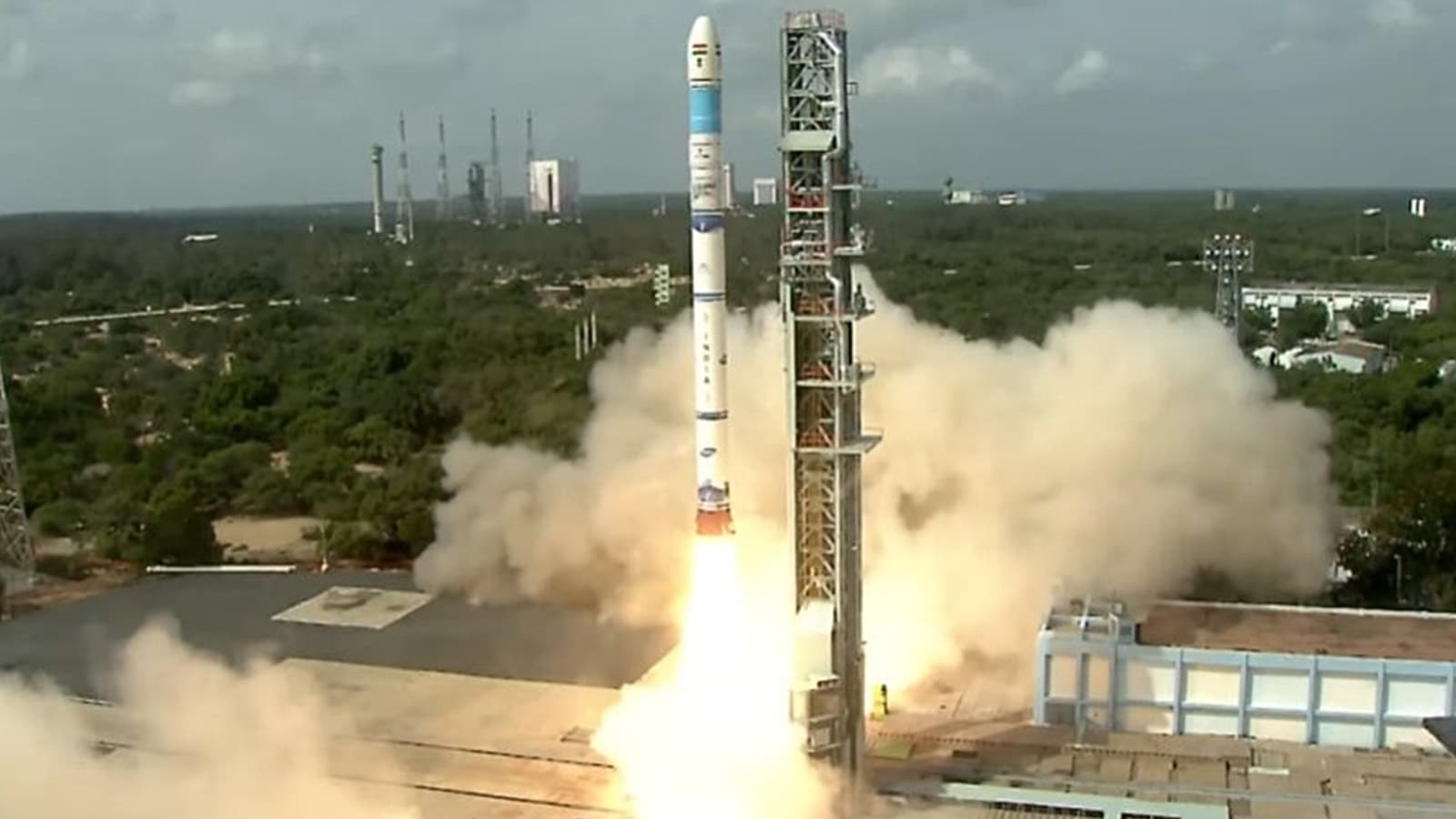After launch success, ISRO says SSLV development is complete | Technology News

The smallest launch vehicle of the Indian Space Research Organisation (ISRO) — SSLV (Small Satellite Launch Vehicle) — in its third and final developmental flight Friday placed the EOS-08 and SR-0 satellites into a precise 475-km circular orbit. With this, the SSLV will be inducted into the space agency’s fleet of operational launch vehicles.
The technology of the vehicle, however, will be transferred to the private industry for commercial flights in bigger numbers.
Congratulating those involved in the successful launch, Prime Minister Narendra Modi in a post on X said: “A remarkable milestone! Congratulations to our scientists and industry for this feat. It is a matter of immense joy that India now has a new launch vehicle. The cost-effective SSLV will play an important role in space missions and will also encourage private industry.”
ISRO Chairperson S Somanath said: “With this third flight of SSLV, we can declare that the development process is completed. We are in the process of transfer of technology to industries for serial production and launches of SSLV on a commercial basis. So, it is a great beginning for SSLV.”
A remarkable milestone! Congratulations to our scientists and industry for this feat. It is a matter of immense joy that India now has a new launch vehicle. The cost-effective SSLV will play an important role in space missions and will also encourage private industry. My best…
— Narendra Modi (@narendramodi) August 16, 2024
“Further, we are also looking for certain activities in the VTM stage and all that will be completed in due course of time,” he said. The VTM or Velocity Trimming Module is the last liquid-propellent based stage of the rocket which is used to correct the velocity just before injecting the satellites into orbit. It was this stage, which did not switch on during the first development flight of the SSLV due to a previous misreading of sensors, leading to the satellites being injected into an unstable orbit.
However, it was a textbook launch on Friday. “The rocket has placed the satellite in a precise orbit as planned. I find that there are no deviations in the injection conditions. The final orbit will of course be known after tracking,” said Somanath.
ISRO’s EOS-08, which was the primary payload on the mission, is a 175-kg experimental satellite, carrying on board three new technologies.
The Electro-Optical Infrared Payload (EOIR) is designed to capture images in mid-wave and long-wave infra-red during the day and night. The data can be used for surveillance, disaster monitoring, environmental monitoring, fire detection, volcanic activity observation, and industrial and power plant disaster monitoring.
Story continues below this ad
The Global Navigation Satellite System-Reflectometry payload (GNSS-R) has been designed to demonstrate that reflected signals from satellite-based navigation systems like GPS can be used for applications such as ocean surface wind analysis, soil moisture assessment, cryosphere studies over the Himalayan region, flood detection, and inland waterbody detection.
Notably, the third payload SiC UV Dosimeter will be used to study the amount of UV radiation that will hit the viewport of the crew module in preparation for the Gaganyaan mission.
“The UV dosimeter is to be flown on the Gaganyaan mission, but we are flying it here to get the on-orbit experience,” said Avinash M, Satellite Director.




